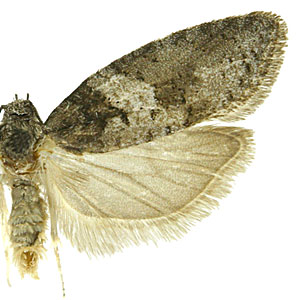Overview
![]()
The Cnephasiini contains approximately 250 species that are distributed throughout the Holarctic. Forewing pattern varies within the tribe, but many North American representatives are yellow, gray, or white. Male genitalia are characterized by an uncus covered in small spines. Female genitalia are characterized by papillae anales that are modified to cover eggs with debris, and a band-shaped, poorly-defined signum. This is the only tribe in the Tortricinae in which most of its members have a 12-carbon sex pheromone, a condition usually found in the Olethreutinae.
North American representatives of the genus include Cnephasia, Decodes, and Eana. Cnephasia is a Palearctic genus with three members introduced into North America: C. asseclana and C. stephensiana, and C. longana. Cnephasia longana is a pest of cereal crops in Europe and has been reported as a pest of strawberries in the Pacific Northwest. Decodes contains 18 species, many of which are present in the American Southwest and northern Mexico. Decodes basiplagana and D. fragariana are oak feeders; the former is present in the East while the latter is present in the West. Eana is a small genus with members in the Palearctic and Nearctic. Most species are have unmarked, white forewings; however, none are treated here. For photos of additional non-targets not covered here, visit the Moth Photographers Group link below.
Cnephasiini larvae are occasionally intercepted at U.S. ports of entry from Europe. It is assumed that a majority of these are Cnephasia, but a genus-level identification is rarely confirmed.
Non-target species









